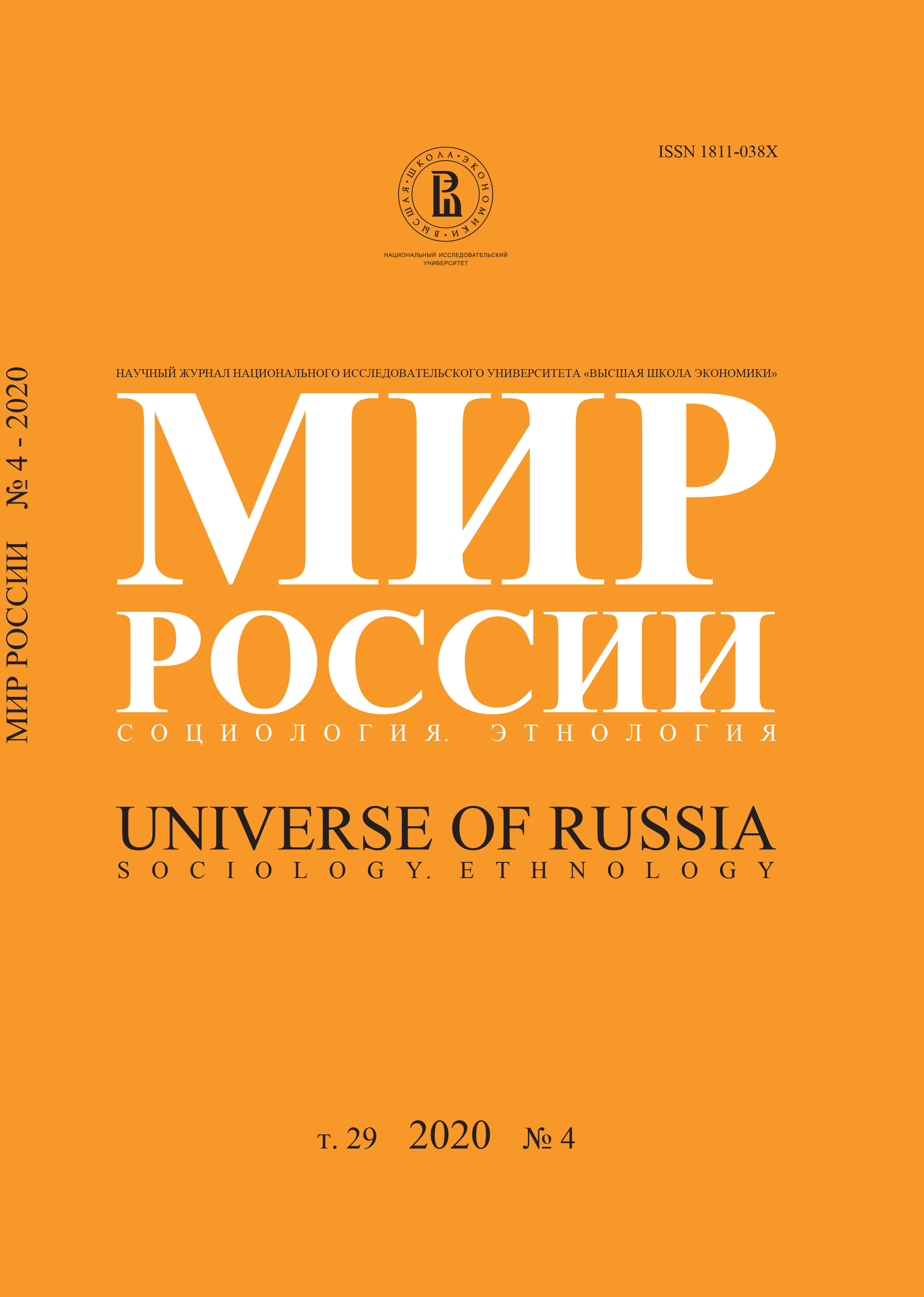The Stratification of Russian Households by Non-financial Wealth: Volume, Structure and Correlates
Abstract
Citation: Bogomolova T., Cherkashina T. (2020) The Stratification of Russian Households by Non-financial Wealth: Volume, Structure and Correlates. Mir Rossii, vol. 29, no 4,
pp. 6–33 (in Russian). DOI: 10.17323/1811-038X-2020-29-4-6-33
Wealth, along with income and expenses, is a measure of individual or household economic status. The understanding of social stratification would be incomplete without studying
wealth inequality. While developed countries collect data that allow the estimation of the extent of wealth inequality in the population, in Russia such data are hard to come by. It is
possible to use open survey data on various possessions among Russian households to at least uncover the structural properties of wealth distribution. Current research focuses on
non-financial assets, i.e. the tangible assets of Russian households. Empirically the study draws on the data of the Comprehensive Living Standards Survey in Russia (Rosstat).
We use this data to analyze the volume, the structure and the correlates of non-financial wealth among Russian households. Using factor and cluster analyses we identify seven
strata. The resulting distribution of households is heavily biased towards a generally low accumulation of non-financial assets: the largest (47%) is the stratum, in which the only
featured property is housing (of which only a third additionally feature a car); the next biggest stratum (19%) is characteristically rural by supplementing housing (and a car)
with a land plot. Together with the households that do not feature any possessions, these two strata account for 70% of the entire population. The remaining four strata feature 3 or
more non-financial assets and have distinct asset portfolios. The socio-demographic profile associated with the wealthier strata conforms to the patterns documented in other countries: it comprises mostly of stable nuclear families with a relatively high level of income, with spouses averaging in the 50-70 age group. In general, the more significant correlates are the conditions for maintaining accumulated property than the conditions for its formation.






